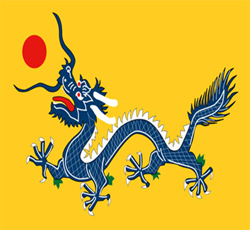Welcoming the Year of the Dragon
VGP – Dragons are familiar to every Vietnamese and Asian people, and they appear to have been for well over a thousand years.
|
|
|
Illustration photo |
When Vietnamese children go to school, they learn that Mother Âu Cơ and Father Lạc Long Quân gave birth to 100 children. Fifty of them went to the mountains and 50 others went to the sea. According to the legend, the Vietnamese people are the descendants of dragons.
The dragon is one of four sacred animals in the folk painting 'Long Ly Quy Phượng' (dragon; unicorn, tortoise; phoenix).
The dragon is a legendary animal. It has a long body covered with scales; it has legs and can fly. It is regarded as the noblest of all animals. The image of the dragon originated in South- East Asia. It is combination of a crocodile and a snake.
Many place names in Việt Nam are named after the dragon. They include Hàm Rồng (Dragon's Jaw), Thăng Long (Rising Dragon), Hạ Long (Descending Dragon), Bạch Long Vĩ (Tail of the White Dragon) and Cửu Long (Nine Dragons). The Cửu Long (or Mekong) Delta is the land of nine dragons. Legend has it that once a young dragon lost its mother. As it flew to the south but was unable to find its mother. Itt went into a frenzy. It dug the land and made nine river mouths that ran into the vast sea. According to ancient belief, when people dreamed of a flying dragon, a good king would ascend the throne.
The image of the dragon is very popular in sculpture and ornament in Việt Nam. In the bas-reliefs in communal houses, the faces of dragons bear a tho (longevity) symbol. The roof of the communal house is decorated with two dragons watching the moon. In large pagodas or mausoleums, there are sculptures of undulating dragons.
The ' dragon' word is used to designate the parts of the body or utensils belonging to the king. For example" mình rồng (dragon's body), mắt rồng (dragon's face); ngai rồng (dragon's throne); sân rồng (dragon's yard).
In the Lý Dynasty (1009-1225), dragons were depicted as large snakes whose face resembled that of gecko. They had no horns, no beard and no scales. The dragon was depicted only in the first four reigns, the most prosperous reigns of the dynasty.
In the Trần Dynasty (1226-1400), the head of the dragon was larger. There was hair and scales.
In the Lê Dynasty (1428-1527), dragon was found at Kính Thiên Palace. Its head was large with protruding eyes; one of its legs held its beard; it had long horns and its name was curled backwards.
In the Mạc Dynasty (1570-1786), the dragons were mostly small; their mane and hair were thin. They had horns and four legs.
In the Nguyễn Dynasty (1802-1945), the dragons on the threshold of the house of King Minh Mạng (1791-1840) had short stout bodies; their eyes were wide open; their feet embraced a ball.
In the year of the dragon, Hanoians remember the 'undulating dragon and squatting tiger position' of ancient Hanoi in the 'Edict on the Removal of the Capital' by Lý Công Uẩn (974-1028).
Việt Nam, like other Asian dragons, is advancing towards a life of plenty, worthy of the children of the dragon./.

